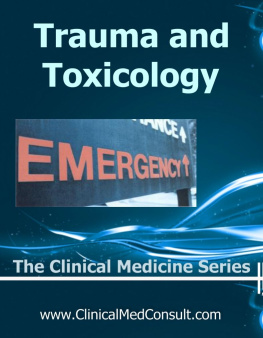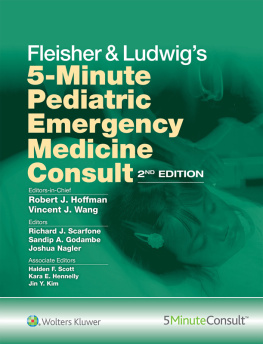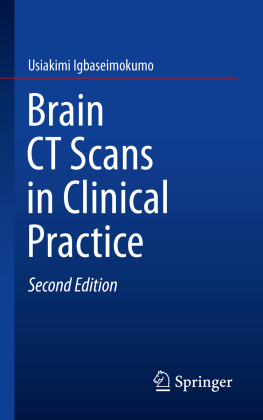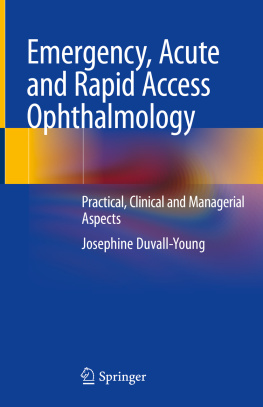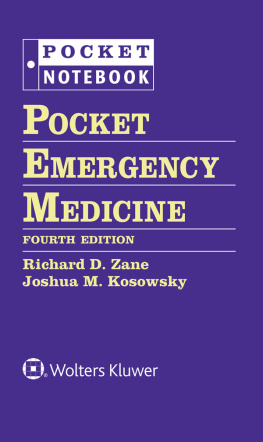No movement or response. Call 911 or code blue, if health care facility, and obtain defibrillator, example AED, superscript 1. Check pulse for 10 seconds. If there is definite pulse, administer 1 breath every 5 to 6 seconds, and recheck pulse after 2 minutes. Otherwise, give 30 compressions and 2 breaths, superscript 2. Compress at least 100 per minute, no faster than 125 per minute. Compression depth at least 2 inches. Allow complete chest recoil between compressions. Minimize interruptions in compressions. Rescuers should switch ventilation and compression roles every 2 minutes or 5 cycles. As soon as AED is connected, analyze rhythm. Then, check rhythm: Is shockable rhythm, like ventricular fibrillation or ventricular tachycardia, present? If shockable rhythm is present, give 1 shock, see page . The superscript are as follows. 1. AED: Automatic external defibrillator. 2. Compressions without breaths may be appropriate for lay people to perform in prehospital setting in cardiac arrest victims. Adult Basic Life Support 2010 AMA Guidelines. 3. PEA: Pulseless electrical activity.
See basic resuscitation in page management. If VT or VF is present, administer 1 shock: 1 manual biphasic at 120 to 200 joules, or 2. AED that delivers device-specific shock, or 3. Monophasic shock at 360 joules. Resume CPR for, establish IV IO access, then recheck rhythm. If VT or VF is still present, continue CPR while defibrillator is charging. Administer 1 shock: 1. Manual biphasic same as first shock 120 to 200 joules, or higher, or 2. AED delivers device-specific shock, or 3. Monophasic at 360 joules. Resume CPR immediately after shock. Give during CPR either before or after the shock. Epinephrine 1 milligram IV or IO repeated after 3 to 5 minutes. Recheck rhythm after CPR; consider advanced airway, capnography. If VT or VF is still present, continue CPR while defibrillator is charging. Administer 1 shock: 1. Biphasic, same as first shock 120 to 200 joules or higher, or 2. AED delivers device-specific shock, or 3. monophasic at 360 joules. Resume CPR immediately after shock. Consider antiarrhythmics during CPR either before or after the shock. Amiodarone: 300 milligrams IV or IO times 1 dose. May repeat at 150 milligrams IV or IO times 1. Lidocaine: 1 to 1.5 milligrams per kilogram IV or IO times 1 dose, then 0.5 to 0.75 milligrams per kilogram IV or IO every 5 to 10 minutes to a maximum of 3 doses or 3 milligrams per kilogram. Consider magnesium, if Torsades de pointes, 2 grams IV IO over 5 to 20 minutes. Once return of spontaneous circulation, treat underlying etiology, consider amiodarone infusion 1 milligrams per minute times 6 hours plus 0.5 milligrams per minute over 18 hours, or lidocaine 1 to 4 milligrams per minute, depending on which antiarrhythmic was used. IV: Intravenous line. IO: Intraosseous access. Once advanced airway, continuous CPR with Adult Advanced Cardiac Life Support.
Pulseless cardiac arrest. See basic resuscitation in page . NONSHOCKABLE rhythm: If asystole, return to box above. If electrical activity, check pulse. If no pulse, go to box above. If ROSC, begin post arrest care. During resuscitation, review for most frequent causes and treat accordingly. Hypovolemia or anemia, hypoxia, hydrogen ion or acidosis, hyper or hypo positive potassium ion, other metabolic, hypothermia, tablets or toxins, drug OD, ingestion, tamponade, cardiac, tension pneumothorax, coronary thrombosis, and pulmonary thrombosis. Pacing is not recommended for asystole. ROSC: Return of spontaneous circulation, Adult Advanced Cardiac Life Support 2010 AMA Guidelines.
1. Anaphylaxis preparedness. 2. Patient presents with possible/probable acute anaphylaxis. 3. Initial assessment supports potential anaphylaxis? If no, 4. Consider other diagnosis. If yes, perform immediate intervention, by assessing airway, breathing circulation, mentation. 5. Inject epinephrine. Good clinical response? If no, 6. Subsequent emergency care that may be necessary depending on response to epinephrine. Consider: Placement in recumbent position, establishing airway, O2, and IV fluids. Consider: Epinephrine infusion, H1 and H2 antihistamines, inhaled bronchodilators, corticosteroids, glucagon, vasopressors, and transportation to emergency department or ICU. Good clinical response? If no, 7. Cardiopulmonary arrest during anaphylaxis: CPR and ACLS measures, and prolonged resuscitation efforts encouraged, if necessary. Consider: High-dose epinephrine, rapid volume expansion, atropine or transcutaneous pacing for asystole or pulseless electric activity, and transportation to emergency department or ICU. If there is good clinical response for steps 5 and 7, 8. Observation: Length and setting of observation must be individualized, and provision of epinephrine kits. 9. Consider consultation with allergist and immunologist.
The front and back of the head and of each arm constitute 4.5 percent of the burned area, while upper and lower trunk and back, and front and back of the legs constitute 9 percent.
In leads 2, 3, and aVF, there is a small and flat trough, followed by two peaks, one tall and sharp, and the other short and curved. In lead V1, there is a deep and sharp trough, followed by a wide, small, and curve peak. In lead V2, there is short and sharp peak, followed by a deep and sharp trough, and a curved peak. In lead V3, there is tall and sharp peak, followed by a small and curved peak.
Symptomatic bradycardia: Heart rate less 60 beats per minute, and heart rate inadequate for clinical condition. Keep airway patent and assist breathing if needed. Administer oxygen. Monitor ECG, analyze rhythm, monitor blood pressure, and pulse oximetry. Obtain IV access. Are the signs or symptoms of decreased perfusion/shock due to bradycardia? Signs or symptoms of diminished perfusion include an acute altered mental status, ischemic chest pain, BP or other signs and symptoms of shock, acute HF. If there is adequate perfusion, monitor patient and observe. If there is poor perfusion, or if the patient is in shock, administer atropine. If ineffective, give, transcutaneous pacing, or epinephrine at 2 to 10 micrograms per minute, or dopamine for 2 to 10 micrograms per kilogram per minute, treat underlying cause, and cardiology consultation. Atropine is usually not effective in second-degree heart block Mobitz type 2 and third-degree heart block with a low Purkinje or ventricular escape rhythm. Atropine is contraindicated in ischemia-induced conduction block, because it increases O2 demand at AV node, aggravating ischemia and resulting heart block. If PEA develops, see PEA management page . Review for most frequent causes and treat accordingly. They include hypovolemia, or hypoxia, hydrogen ion acidosis, hyper or hypo potassium ion or other metabolic, hypoglycemia, hypothermia, tablets or toxins, drug OD, ingestion, superscript 1, tamponade, cardiac, tension pneumothorax, thrombosis, coronary or pulmonary, and trauma. Text for superscript 1 reads, consider beta-blocker, calcium channel blocker overdose therapy.
Tachycardia consists of narrow and wide complexes with a pulse. Keep airway patent, assist breathing, and support circulation if needed. Administer oxygen, secure airway, intubate if needed, and obtain IV access. Monitor ECG, analyze rhythm, monitor blood pressure, and pulse oximetry. ID and treat reversible causes, example fluids, blood. Is patient unstable? New altered mentation, persistent chest pain, BP, or other signs of shock. Rate-related symptoms are uncommon if HR less than 150 per minute. If the patient is unstable, immediately cardiovert, see page . Torsade de pointes: magnesium 1 to 2 grams IV in 5 to 60 minutes plus infusion.
Attempt therapeutic diagnostic maneuver: Vagal stimulation, such as valsalva, carotid massage, and adenosine 6 milligrams IV, may repeat 12 milligrams IV times 2, follow adenosine with 20 milliliters NS bolus. Junctional tachycardia: Preserved EF includes no DC cardioversion, amiodarone, beta-blocker, and Ca channel blocker, and EF less than 40 percent or CHF includes no DC cardioversion and amiodarone. Paroxysmal supraventricular tachycardia: Priority order of preserved EF includes Ca channel blocker, beta-blocker, digoxin, DC cardioversion, and consider amiodarone, procainamide, and sotalol, and EF less than 40 percent or CHF includes diltiazem, amiodarone, digoxin, and DC cardioversion. Ectopic or multifocal atrial tachycardia: Preserved EF includes no DC cardioversion, amiodarone, beta-blocker, and Ca channel blocker, and EF less than 40 percent or CHF includes no DC cardioversion, amiodarone, and diltiazem. Preserved: preserved cardiac function, EF: Ejection fraction, CHF: congestive heart failure. See pages for drug dosing. Do not use IV beta-blocker and calcium channel blocker together. Multifocal atrial tachycardia (MAT): Treat underlying disorder, example, bronchospasm.
Next page

